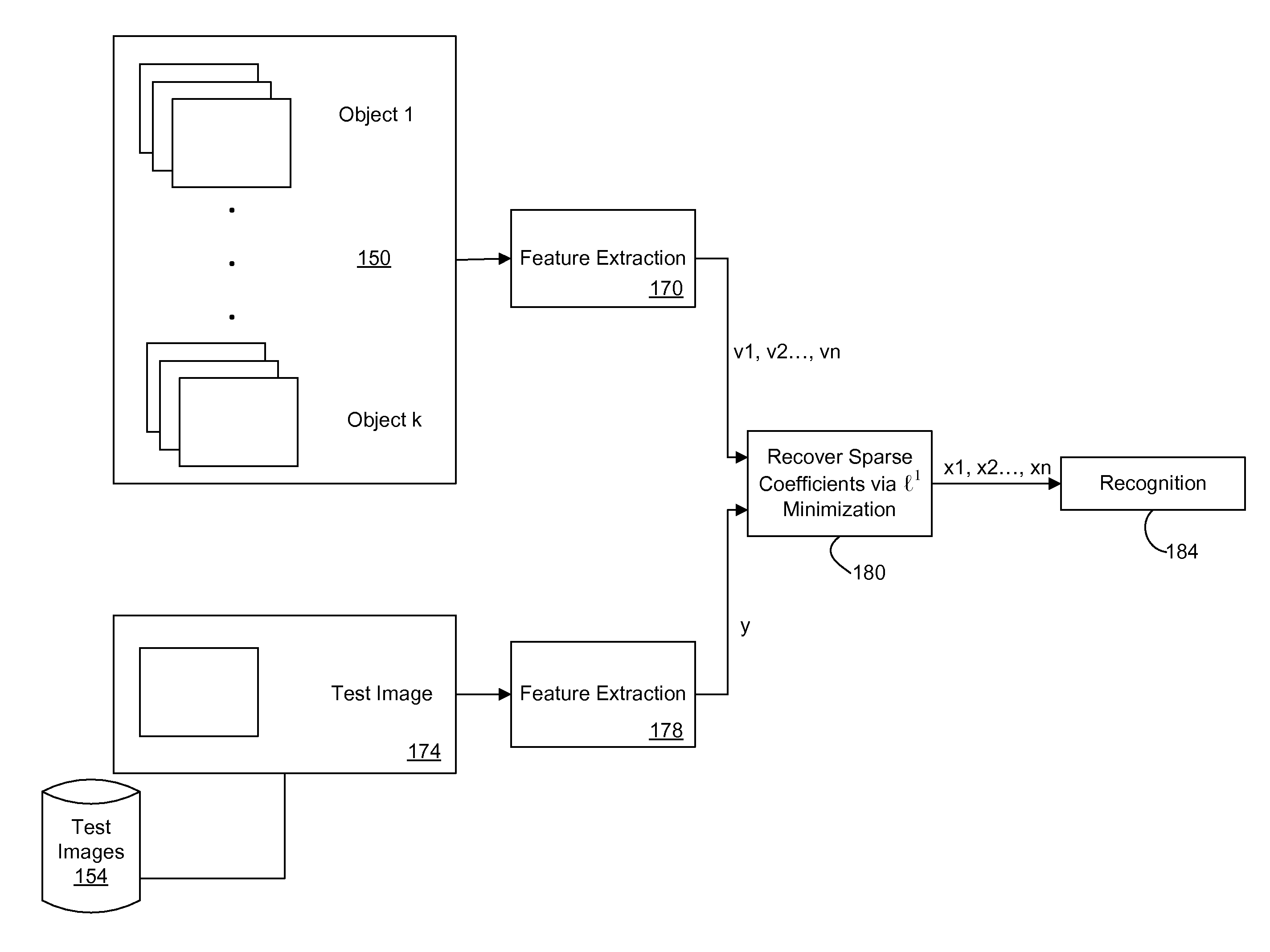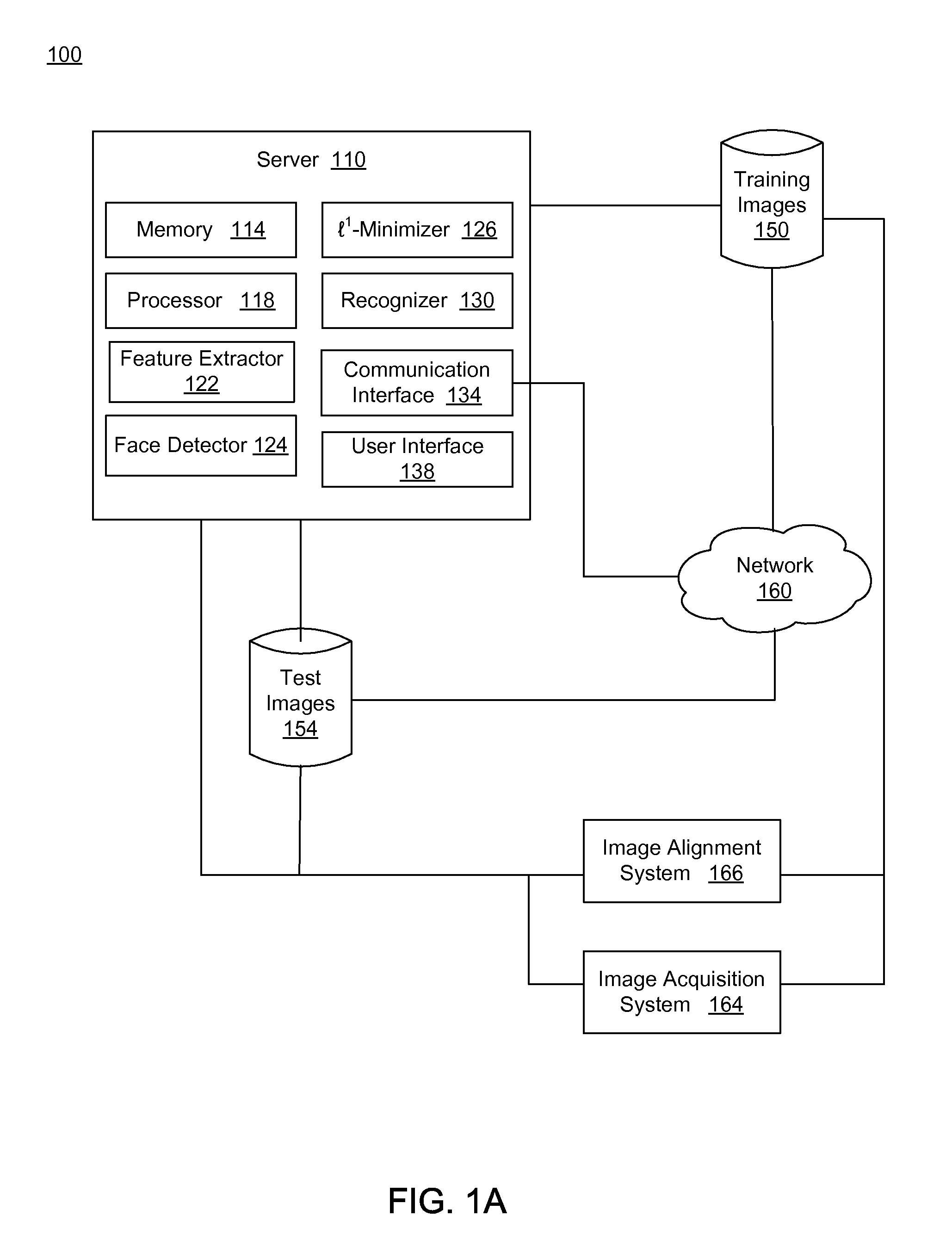Recognition via high-dimensional data classification
a high-dimensional data and classification technology, applied in the field of methods and a, can solve problems such as not being very robust to occlusion
- Summary
- Abstract
- Description
- Claims
- Application Information
AI Technical Summary
Problems solved by technology
Method used
Image
Examples
Embodiment Construction
ent and a chosen illumination pattern for implementation of the training images acquisition system.
[0046]FIGS. 33A and 33B are, respectively, graphs displaying the coverage and granularity of the illumination pattern of the training images acquisition system during experiments in which the number of rings and the number of cells was varied.
[0047]FIG. 34 displays an example of a set of 38 training images acquired from the training images acquisition system using the pattern of FIG. 32B.
[0048]FIG. 35 displays the flow of a test image through the steps of acquisition, face detection, alignment with the training images database, and recognition.
[0049]FIG. 36 is a graph of large-scale experiments on Multi-PIE displaying ROC curves for the algorithm (labeled as l1), compared with those for NNm, NSm, and LDAm.
[0050]FIG. 37 displays representative examples of failed Multi-PIE subjects.
[0051]FIG. 38 displays representative examples of subjects classified in categories 1-3, with a row for eac...
PUM
 Login to View More
Login to View More Abstract
Description
Claims
Application Information
 Login to View More
Login to View More - R&D
- Intellectual Property
- Life Sciences
- Materials
- Tech Scout
- Unparalleled Data Quality
- Higher Quality Content
- 60% Fewer Hallucinations
Browse by: Latest US Patents, China's latest patents, Technical Efficacy Thesaurus, Application Domain, Technology Topic, Popular Technical Reports.
© 2025 PatSnap. All rights reserved.Legal|Privacy policy|Modern Slavery Act Transparency Statement|Sitemap|About US| Contact US: help@patsnap.com



